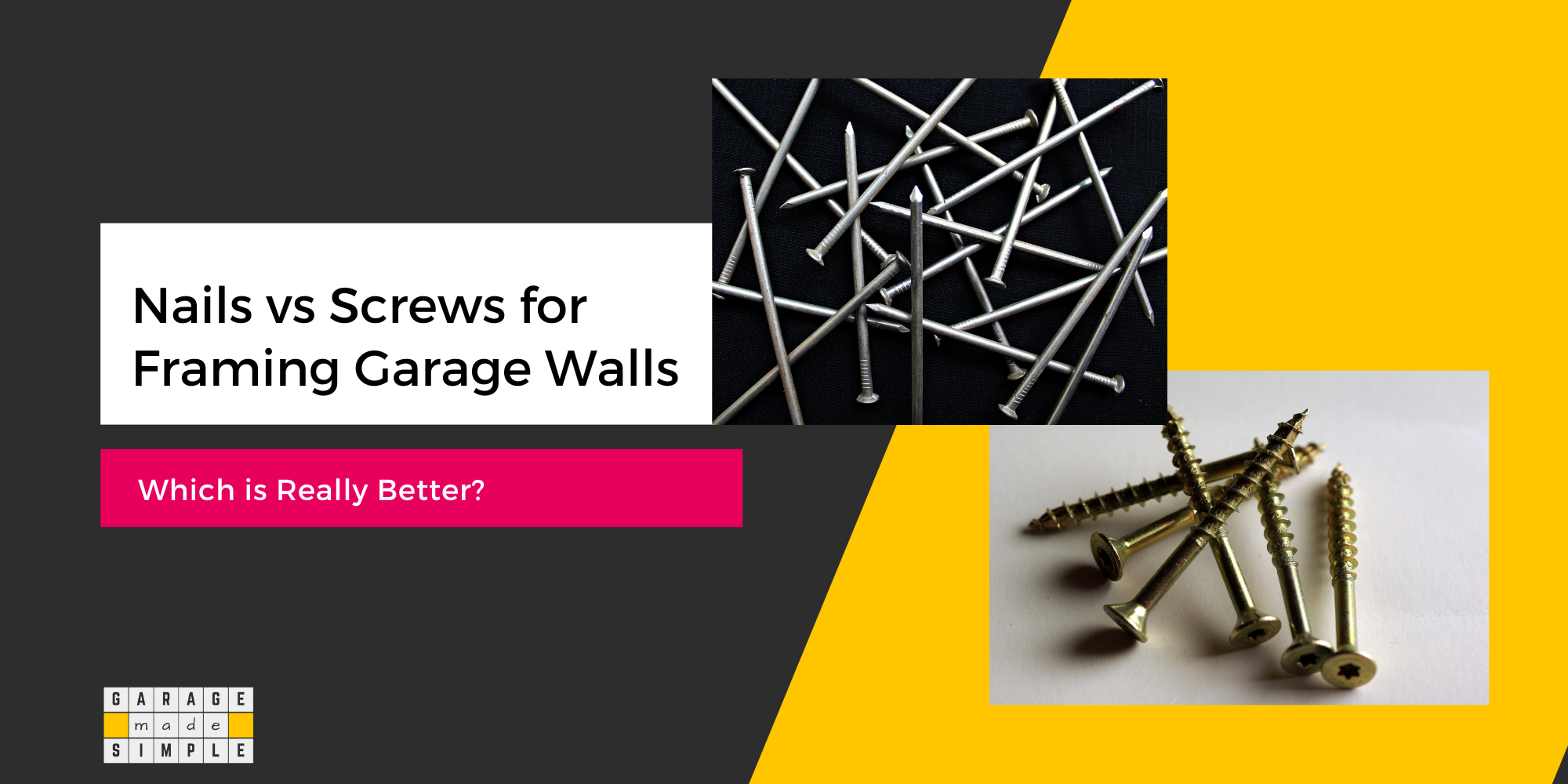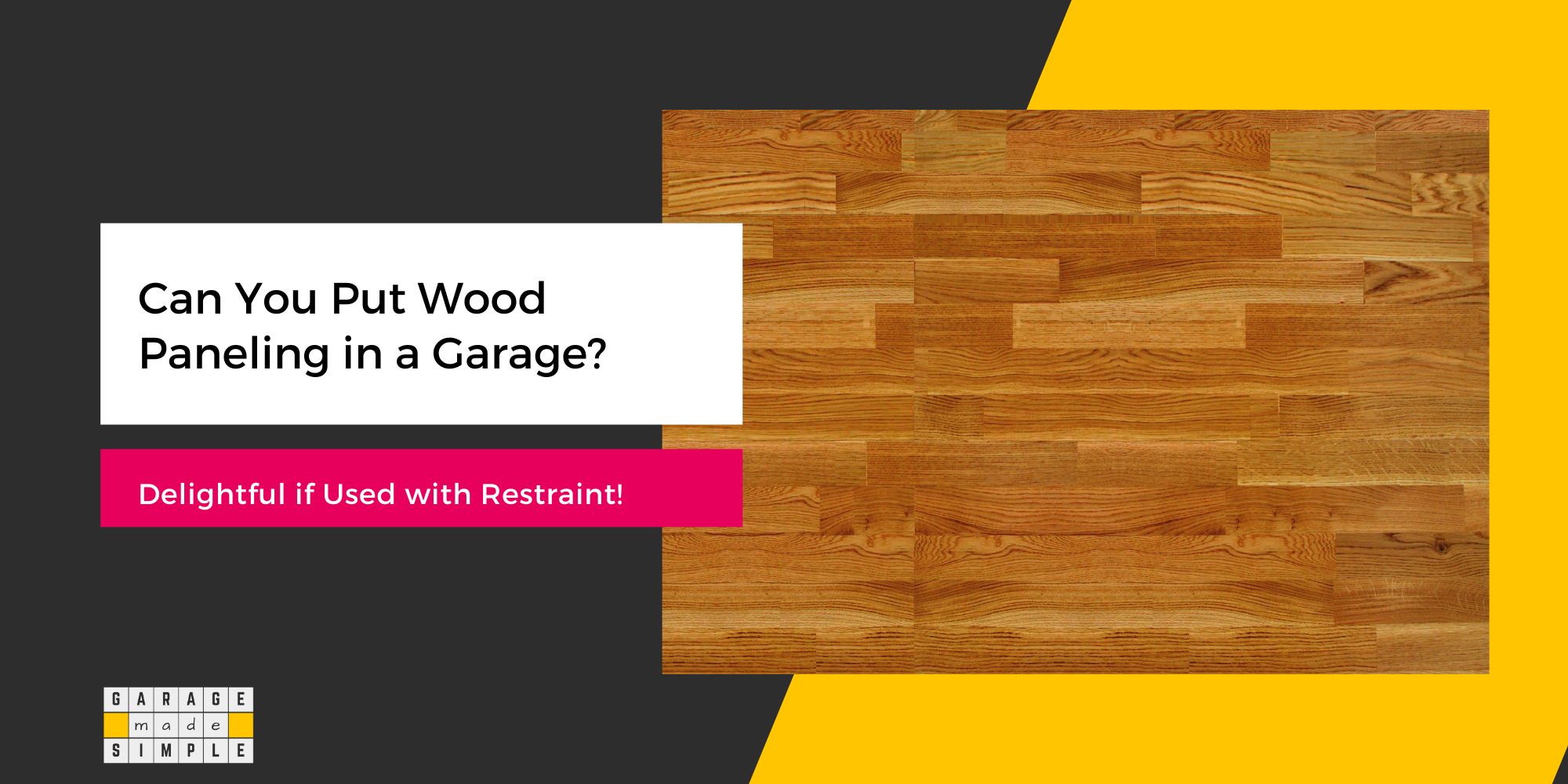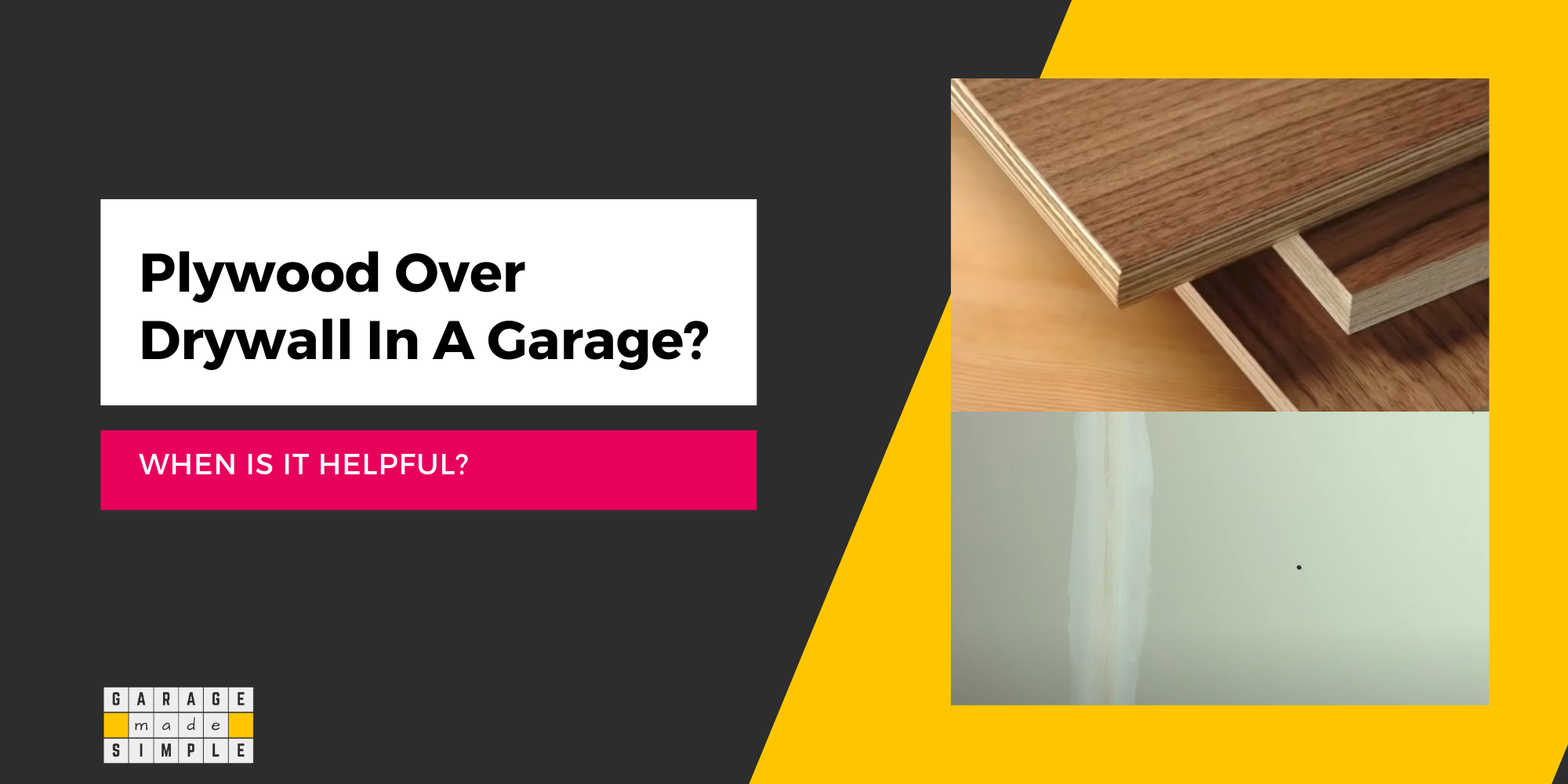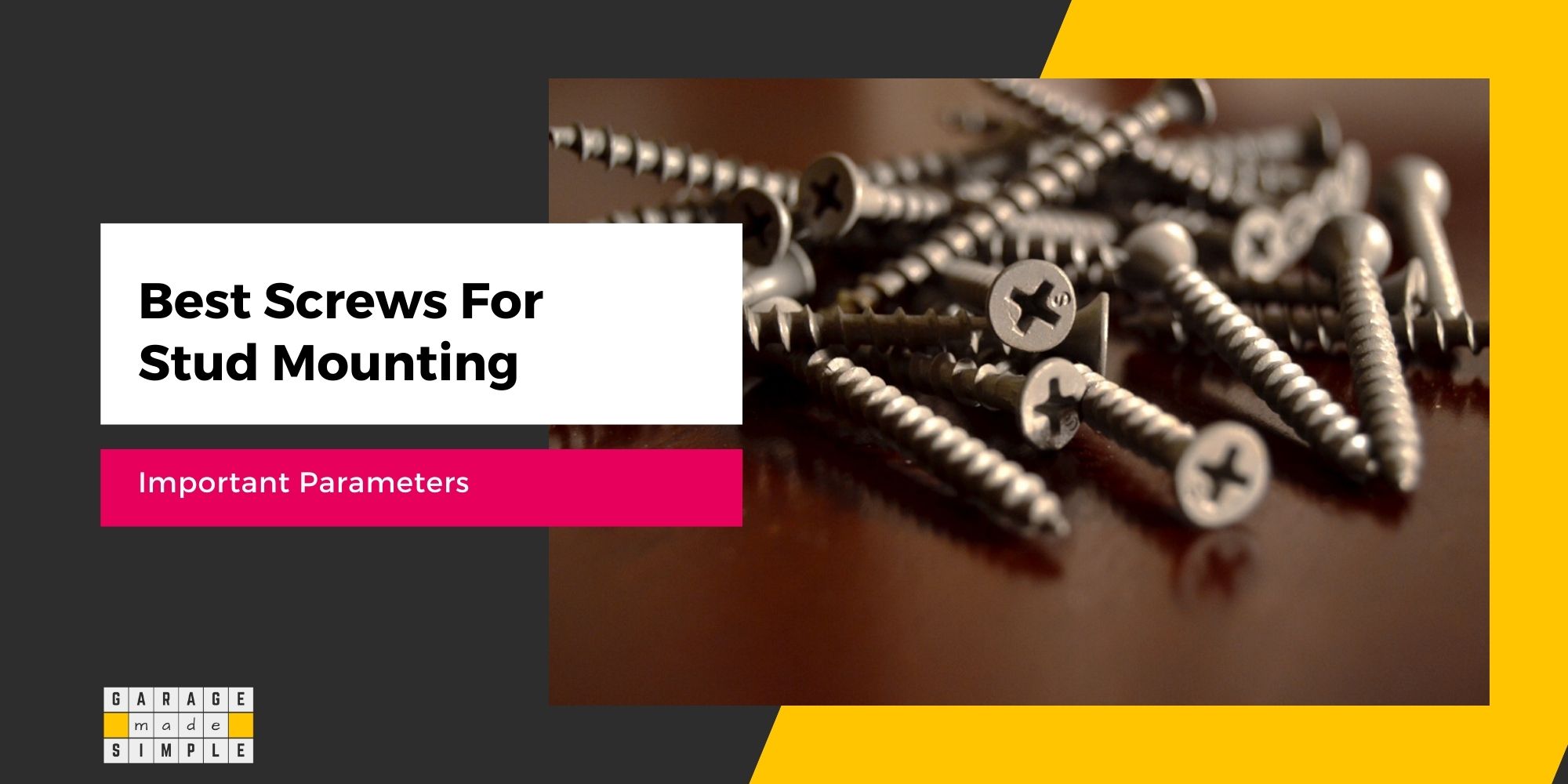Garage Door Frame: How Important Is It Really? (Find Out!)
As an Amazon Associate, I earn from qualifying purchases.
Why is a Strong Garage Door Frame Important?
A strong garage door frame is important as it holds your garage door in place. A weak or damaged garage door frame can ultimately weaken & damage the garage door itself. You certainly do not want the safety & security of your home compromised because of a weak or damaged garage door frame.
In this article I am going to bring you up to date with the different garage door frame materials, their pros & cons. I also give you tips on preventive & corrective maintenance so that you can keep your garage door frame in good shape.
What Are Garage Door Frames Made Of?
Garage door frames are usually made of wood, aluminum or steel.
Wooden frames are sturdy, but can warp and rot over time. Aluminum frames are lightweight and rust-resistant, but not as strong as steel. Steel frames are strong and durable, but can rust if not properly coated or maintained.
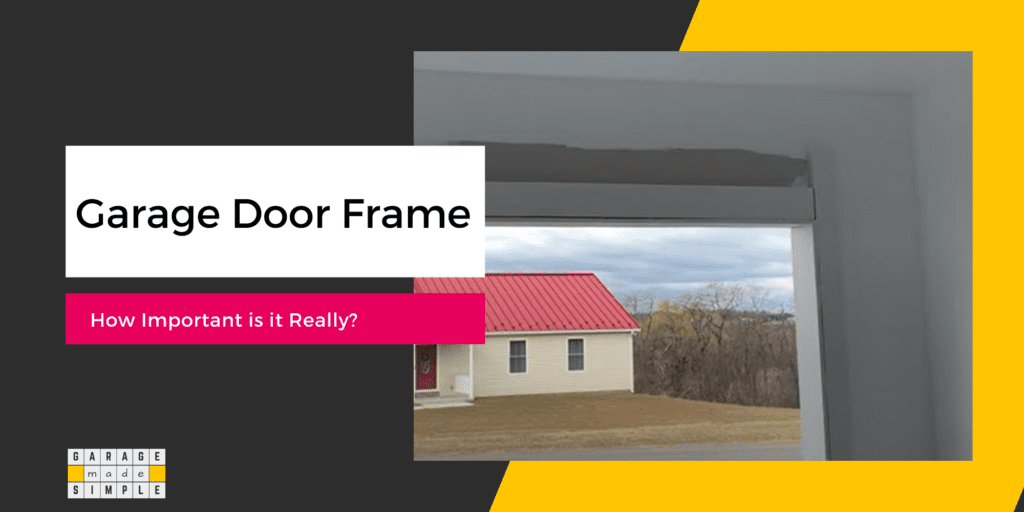
A quick summary of each type of garage door frame:
Wood Garage Door Frames
Wood frames are durable and provide a traditional, natural look. They can be painted or stained to match, complement or contrast with the garage door color or finish. Wood garage door frames typically use 2×4 studs or 2×6 studs.
However, wood frames require regular maintenance to keep them looking good and to prevent attacks from termites. Wood is also more susceptible to warping and rotting than other materials.
Aluminum Garage Door Frames
Aluminum frames are lightweight, rust-resistant and require minimal maintenance. They are also cheaper than wood or steel garage door frames.
However, they are not as strong as steel and may dent more easily.
Steel Garage Door Frames
Steel frames are strong, durable, and require minimal maintenance. With the right protective coating they can be rust-resistant and quite colorful.
However, steel frames are more expensive. In spite of the higher cost steel garage door frames are worth it due to their structural strength & durability.
What Are the Pros & Cons of Wooden Garage Door Frames?
Pros of Wooden Garage Door Frames:
- Wood is a natural and attractive material that can add a rustic or traditional look to your garage.
- Wooden frames can be painted or stained to match the exterior of the house and the garage door.
- Wood is a good insulator. It will make your garage more energy efficient.
Cons of Wooden Garage Door Frames:
- Wood frames are not very durable. They can warp, rot, or degrade over time if not properly maintained.
- Wood is hygroscopic. In areas with high humidity, mold or mildew growth is very likely.
- Wooden frames are constantly under attack from termites, carpenter ants, etc.
- Wood frames need frequent painting or staining to retain their good looks.
- They often cost more than steel or aluminum frames.
What Are the Pros & Cons of Aluminum Garage Door Frames?
Pros of Aluminum Garage Door Frames:
- Aluminum is a lightweight, strong material and resistant to rust & corrosion.
- Aluminum frames are low maintenance. They do not require painting or staining.
- They are cheaper than both wood and steel frames.
- They are suitable for both residential and commercial use
Cons of Aluminum Garage Door Frames:
- Aluminum frames are more ductile than steel frames. They can dent or bend relatively easily.
- They are not as strong as steel frames.
- Aluminum is a very good heat conductor. As such aluminum frames reduce the energy efficiency of the garage.
- They have an industrial look and it is not easy to customize them.
- They are not suitable for areas with extreme weather conditions.
What Are the Pros & Cons of Steel Garage Door Frames?
Pros of Steel Garage Door Frames:
- Steel is strong & durable. It can withstand heavy use and harsh weather conditions.
- Epoxy or PU coated steel frames are rust and corrosion-resistant.
- They are usually cheaper than wooden frames.
- They are suitable for both residential and commercial use.
Cons of Steel Garage Door Frames:
- Steel frames are good conductors of heat and are therefore not energy efficient.
- Any nicks have to be repainted immediately to prevent rust from spreading.
Summary of the Pros & Cons of the 3 Materials
| Material | Pros | Cons |
| Wood | Durable, traditional look, easy to paint or stain | Requires regular maintenance, susceptible to warping and rotting |
| Aluminum | Lightweight, rust-resistant, low maintenance | Not as strong as steel, may dent more easily |
| Steel | Strong, durable, rust-resistant, available in a variety of colors | More expensive than aluminum |
Top Garage Door Frame Preventative Maintenance Tips
- Clean the frame, 2 – 3 times a week with a mild detergent and water.
- Inspect the frame, during the cleaning process, for signs of damage, such as dents, cracks, or rusting.
- Repair the damage and apply paint or sealant on the areas that are rusting.
- Tighten any loose hardware, such as screws or bolts, to ensure that the frame is securely attached to the garage door and the wall.
- Apply a fresh coat of paint or sealant to the frame, every 2 – 3 years, to protect it from the elements and to keep it looking new.
- Keep the area around the frame free of debris and clutter. This will ensure the garage door does not get stuck and put stress on the garage door frame.
- Keep the frame lubricated with a light oil or lubricant to help it move smoothly and to prevent rust or corrosion.
- Consider adding weatherstripping to the frame to help seal it and keep out drafts, moisture and pests.
- Contact a professional garage door service company if there is a problem you can not solve.
What Are Common Problems and Their Solutions?
Some very common problems with garage door frames and their solutions include:
- Dents and scratches: These can be caused by a variety of things, such as a car or bike hitting the frame, or debris getting caught in the door as it closes. To fix dents and scratches, you can use a filler to repair the damage and then paint over it to match the existing color.
- Rust: Rust can occur when the frame is exposed to moisture and air. To remove rust, use a wire brush or sandpaper to scrape it off, then apply a rust inhibitor and paint over the affected area.
- Warping: Warping can occur when the frame is exposed to extreme temperatures or humidity. To fix a warped frame, you can use a heat gun to gently heat the area, then straighten it out with a jig or clamp.
- Loose hardware: Loose hardware can cause the frame to be unstable, making it difficult to open and close the garage door. To fix this, simply tighten all screws, bolts, and other hardware to ensure that the frame is securely attached.
- Weather-stripping: Weather-stripping can become worn or damaged over time. To fix this, you can remove the old weather-stripping and replace it with new.
- Insulation: Insulation can become damaged or deteriorate over time. To fix this, you need to remove the old insulation and replace it with new.
When Should You Replace a Garage Door Frame?
There are several situations where it may be necessary to replace a garage door frame, including:
- Significant damage: Sometimes the frame may be damaged beyond repair, such as from a car accident or a natural disaster.
- Rust: If the frame has been neglected for too long and is heavily rusted, it may not be safe. Replacement rather than repairs may be a better option.
- Warping: Repairing a garage door frame may not be possible if the frame is significantly warped.
- Age: If the frame is too old, maybe it is time to get a new one rather than continue to make repairs.
- Upgrading: Get a new garage door and frame if you are remodeling your garage.
- Safety concerns: If the frame is unstable or poses a safety risk, it may be necessary to replace it for safety reasons.
Check out The 10 Best Garage Doors of 2023 if you are looking to buy a new garage door.
Thank you very much for reading the post. I do hope you found it informative and useful.

